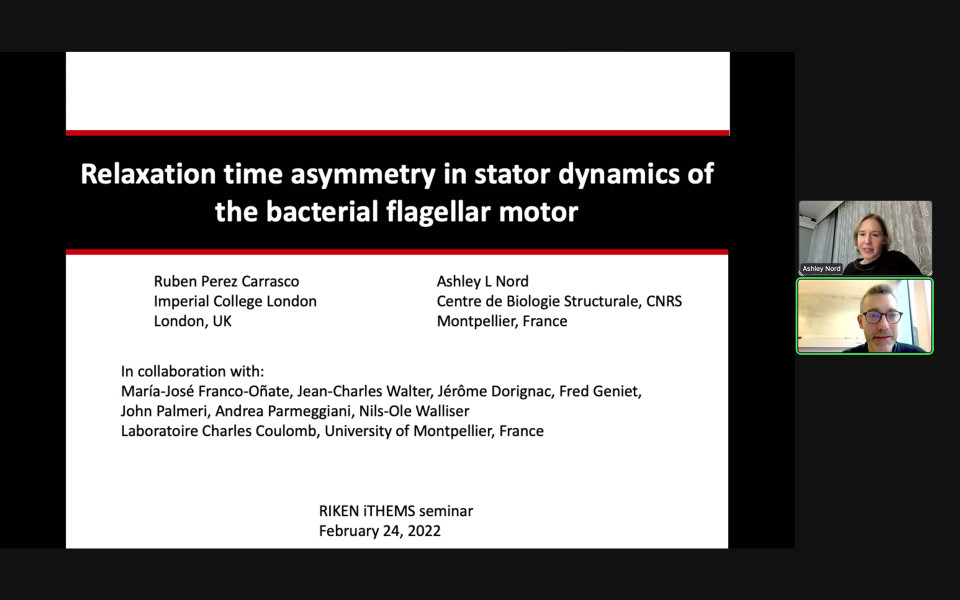iTHEMS Biology Seminar by Dr. Ashley Nord and Dr. Rubén Pérez-Carrasco on February 24, 2022
Dr. Ashley Nord (Centre de Biologie Structurale/CNRS, France) and Dr. Rubén Pérez-Carrasco (Imperial College London, UK) gave a very interesting talk on the dynamics of stator units, the ion channels that generate torque for bacterial flagella.
In the first half of the presentation, Dr. Ashley explained how the stator units produce torque once they are bound to the flagellar structure. Their experiment was able a) to track magnetic nanoparticles attached to E. coli flagella, and b) to set two initial conditions for the number of bound stator units. The work differs from the traditional views of the field because it shows -- for the first time -- the existence of two sets of relaxation times for stator units [1,2].
In the second part of the talk, Dr. Rúben discussed various stochastic models with asymmetric relaxation times to describe the dynamics of stator units. According to estimates via approximate Bayesian computation, the extended catch bond model with additional bound states performed better than other alternatives. If confirmed, their conclusion could give important hints and improve our understanding of biochemical processes in flagellar motors.
Reported by Gilberto Nakamura
References
- Ruben Perez-Carrasco, et al, Relaxation time asymmetry in stator dynamics of the bacterial flagellar motor, bioRxiv 2021.07.05.451114 (2021), doi: 10.1101/2021.07.05.451114
- Ruben Perez-Carrasco, et al, Science Advances (2022)


